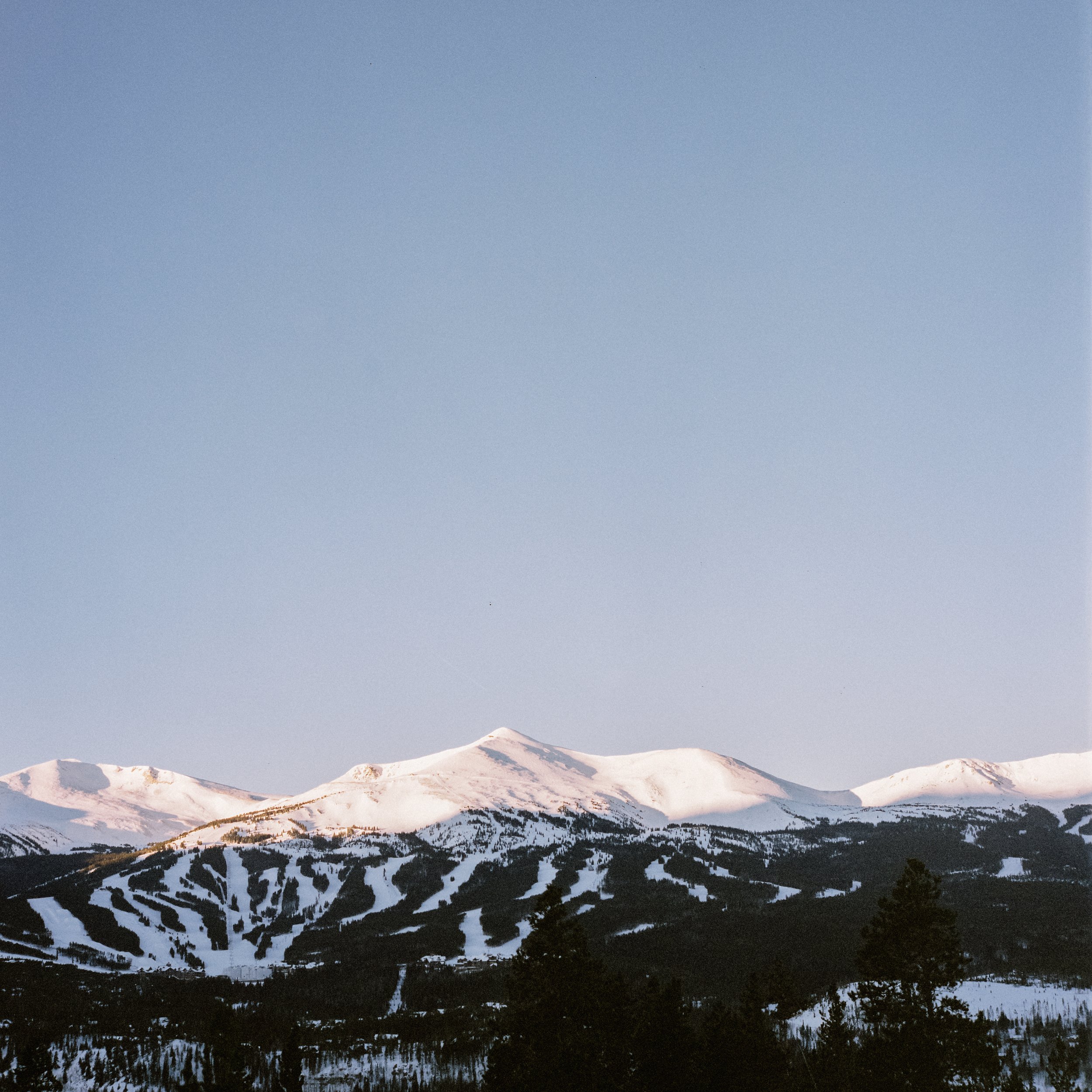This is a continuation of my last post about my time as a cinematographer and editor on the feature documentary film, Chasing The Present, In case you didn’t read the previous post, You can check it out here. A few years back I had the good fortune to spend some time in the stunning state of Colorado while shooting and editing part of a film and, during the time off that I had in this beautiful place, I took the time to walk around and shoot some medium format film.
Father and son exploring Lily Lake
The camera I used was my 1965 Bronica S2 medium format film camera. Not the lightest of film photography units, but it was worth dragging it half-way around the world given the results that it gives. The film that I was working on as a cinematographer was being shot on Red cameras and so it was great to switch over to the analog process and the 1x1 frame of the camera. During these breaks I felt that I was able to somehow refresh my way of looking through working in this totally different format.
The life of a director’s wife is not easy, having to often pose for hours while I set up the film camera and fiddle around with the light meter.
The bright Colorado sun might looks harsh on digital cameras but looks great on medium format film.
I have heard Roger Deakins talk about how much he enjoys shooting film photos during downtime from production schedules and I can totally understand what he gets out of the process. The calm and mental freedom that personal film photography projects away from the hecticness of call sheets felt like a breath of fresh air.
Breckenridge, Colorado
Backstreet in Lafayette
In the world of photography, the concept of roll-off refers to the gradual transition from highlight detail to pure white areas in an image. When shooting with medium format film, this roll-off effect takes on a mesmerizing quality, bringing a unique charm to the final result. Medium format film, known for its larger negative size (typically 6x6, 6x7, or even 6x9 centimeters), captures a wider dynamic range compared to smaller formats. This generous dynamic range allows for smoother tonal transitions, especially in the highlights.
One of the most fascinating aspects of medium format film is the way it handles overexposed areas. Rather than abruptly clipping the highlights, as is often the case with digital sensors, medium format film gently rolls off the detail, creating a soft, dreamlike quality. This characteristic preserves delicate textures and subtle nuances in the brightest parts of an image, lending it a timeless and ethereal feel.
Film director Mark Waters on the fence.
When shooting a scene with ample highlight information, such as a sunset or a bright sky, the roll off effect on medium format film is truly magical. The film's ability to capture a wide tonal range allows for incredible preservation of colors and details that might otherwise be lost in a digital capture. The resulting image showcases a smooth gradation from intense light to rich tones, portraying the scene as our eyes see it, and evoking a sense of nostalgia that digital photography often struggles to replicate.
Producer Jiwon Lee in Lafayette.
Additionally, the roll-off effect achieved with medium format film plays a significant role in portraiture. When capturing a subject's face, the gentle transition from light to shadow in the highlights creates a natural and pleasing rendition of their features. It minimises the risk of blown-out highlights on skin or shiny surfaces, resulting in a beautifully balanced image where the individual's personality shines through.
Actress Sophie Powles
Sita Santos
As a freelance filmmaker in Korea, I am so grateful to have these wonderful opportunities to travel all over the world for work and the local people we met during our time in Colorado were so kind and friendly that I really hope to return one day.
If you are interested, you can learn more about Chasing The Present here and watch the trailer here.
Read part one of this blog here.
‘Chasing The Present’ is available now on AppleTV, Gaia, GooglePlay, Vudu, Microsoft Store and DVD release.









